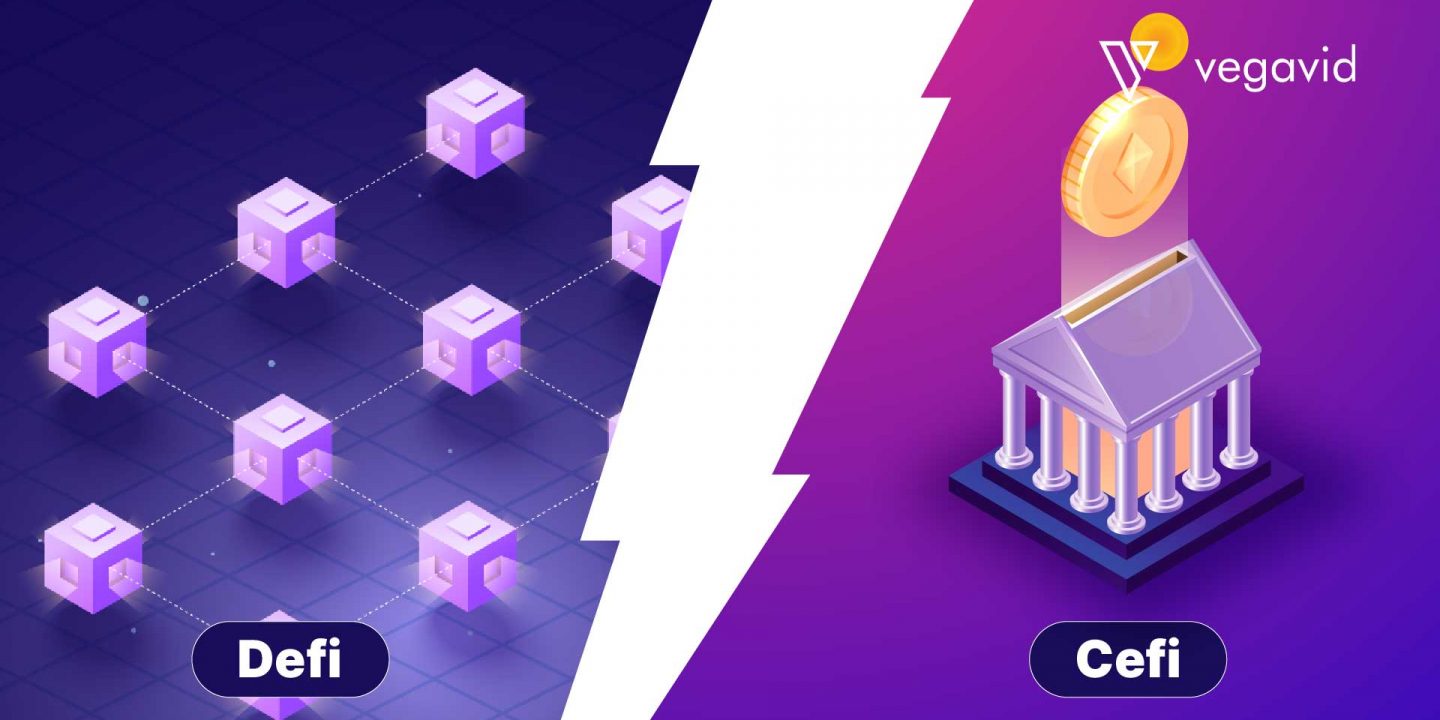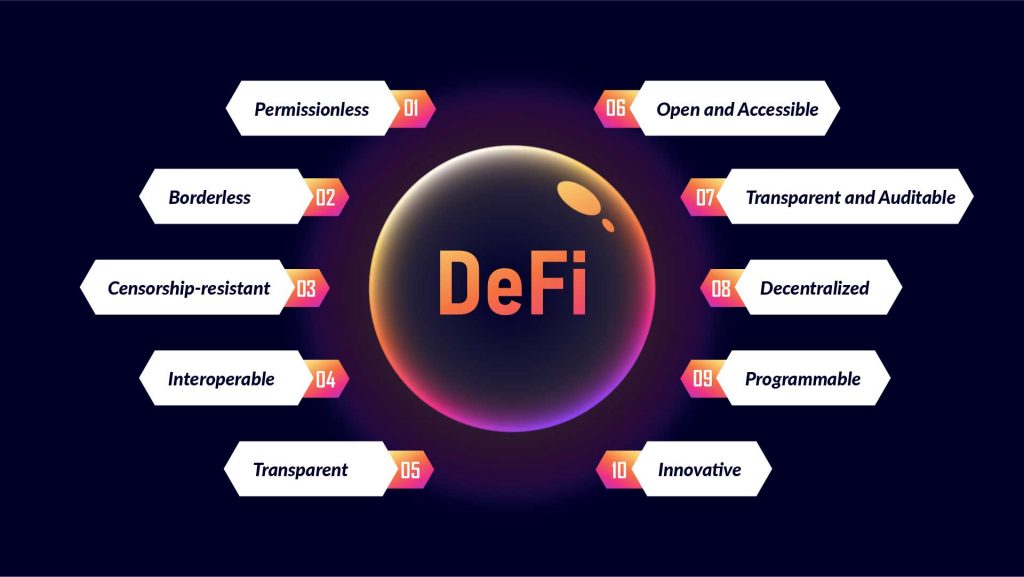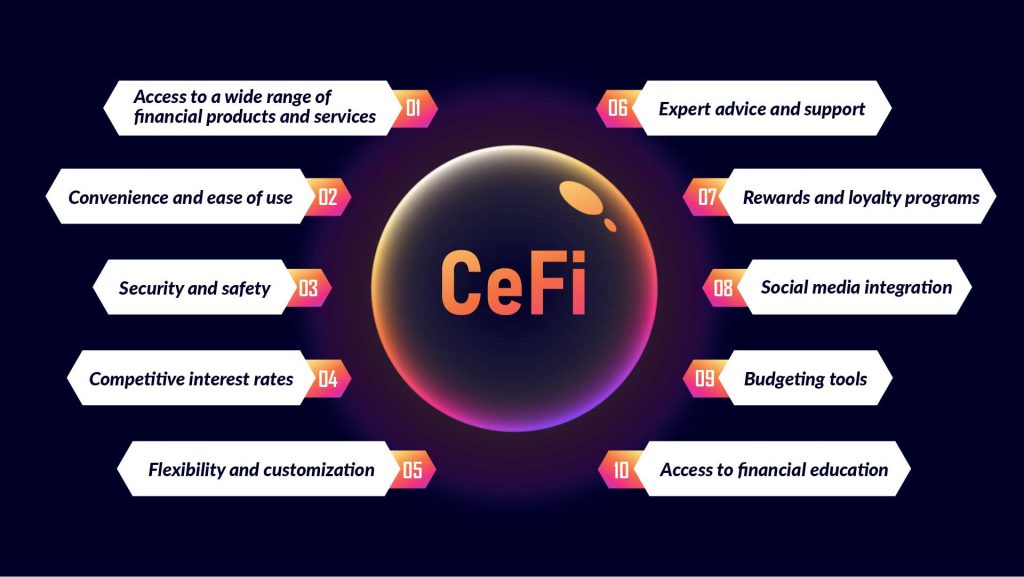
There are two main types of financial systems in the world today: centralized finance (CeFi) and decentralized finance (DeFi). Both have their own advantages and disadvantages, but there are some key differences between them.
Centralized finance refers to the traditional financial system, where financial institutions are centrally controlled by governments or other powerful entities. This system is generally more stable and regulated, but it can be slower to adapt to change and innovation.
Decentralized finance, on the other hand, is a newer system that uses blockchain technology to decentralize control of financial institutions. This makes it more flexible and efficient, but it can also be more volatile.
So, which is better? That depends on your needs and preferences. If you want a more stable and regulated system, CeFi is probably a better option. But if you’re looking for more flexibility and innovation, DeFi might be a better choice.
In this blog we will understand the both type of finance deeply and their key differences.
What is Decentralized Finance (DeFi)?
Decentralized finance—often called DeFi—refers to the shift from traditional, centralized financial systems to peer-to-peer finance enabled by decentralized technologies built on the Ethereum blockchain.
It is a growing ecosystem of financial protocols built on Ethereum that enables anyone, anywhere to access a broad range of financial services.
DeFi protocols offer a wide variety of services including lending, borrowing, stablecoins, tokenized BTC, trading, and more. By using Ethereum smart contracts, DeFi protocols provide a trustless, permissionless, and decentralized infrastructure for financial applications.
The DeFi ecosystem is still in its early stages, but it has already seen explosive growth. In 2019, the value locked in DeFi protocols grew from $600 million to over $4 billion. And 2020 is on track to be an even bigger year for DeFi, with the total value locked in DeFi protocols currently sitting at over $13 billion.
With DeFi, we are on the cusp of a new era of open finance where anyone, anywhere can access the financial services they need without having to go through a traditional financial institution.
Decentralized Finance, or DeFi for short, is a new wave of financial applications that are built on the Ethereum blockchain. These applications are designed to offer a more open, transparent, and decentralized alternative to traditional financial products and services.
The top 10 features of DeFi

From lending and borrowing platforms to stablecoins and tokenized BTC, the DeFi ecosystem has launched an expansive network of integrated protocols and financial instruments. Here are the top 5 features that make DeFi so compelling:
- Permissionless: In traditional finance, you need to go through a centralized institution in order to access financial services. With DeFi, anyone with an Internet connection can access a wide range of financial services directly from their Ethereum wallet.
- Borderless: DeFi protocols are available to anyone with an Internet connection, regardless of location or country.
- Censorship-resistant: Because DeFi protocols are built on Ethereum, they are resistant to censorship by any central authority.
- Interoperable: DeFi protocols are designed to work with each other, enabling a wide range of financial services and products.
- Transparent: DeFi protocols are built on Ethereum’s decentralized infrastructure, which makes them transparent and auditable.
- Open and Accessible: DeFi is open and accessible to anyone with an Ethereum wallet. There are no barriers to entry or restrictions on who can participate.
- Transparent and Auditable: All DeFi applications are built on the Ethereum blockchain, which is a public ledger. This means that all transactions and activities are transparent and can be audited by anyone.
- Decentralized: DeFi is decentralized, meaning it is not controlled by any central authority. Instead, it is powered by the Ethereum blockchain and the community of users who participate in it.
- Programmable: DeFi applications are programmable, meaning they can be customized to meet the needs of users. This makes DeFi very flexible and adaptable.
- Innovative: DeFi is constantly evolving and innovating. New applications and features are being developed all the time. This makes DeFi an exciting and ever-changing space to be involved in.
What is Centralized Finance (CeFi)?
Centralized finance, also known as CeFi, is a financial system in which financial institutions are centrally controlled by a government or other authority. CeFi systems are typically regulated and supervised by government agencies, and they typically have higher barriers to entry than decentralized finance (DeFi) systems.
Centralized finance systems have existed for centuries, and they continue to dominate the global financial system. However, in recent years, there has been a growing movement towards decentralized finance, which offers many advantages over CeFi.
Centralized finance, or CeFi, is a financial system in which financial institutions are centrally controlled by a government or other authority. CeFi systems are typically found in countries with strong government control over the economy, such as China, Russia, and Iran.
In these systems, banks and other financial institutions are subject to strict regulation by the government, and are often state-owned. This gives the government a great deal of control over the financial system, and allows it to influence the economy through monetary and fiscal policy. CeFi systems have a number of advantages, such as stability and predictability, but they can also be inflexible and slow to respond to change.
Top 10 Features of Centralized Finance (CeFi)

There are numerous benefits to using a centralized finance platform, including the ability to easily track and manage your finances in one place. Other top features of CeFi platforms include:
- Access to a wide range of financial products and services: CeFi platforms offer users access to a wide range of financial products and services, including banking, investments, and insurance.
- Convenience and ease of use: CeFi platforms are designed for convenience and ease of use, with features such as online banking and mobile apps that make it easy to manage your finances on the go.
- Security and safety: CeFi platforms are highly secure and offer a safe environment for users to manage their finances.
- Competitive interest rates: CeFi platforms offer competitive interest rates on products such as savings accounts and loans.
- Flexibility and customization: CeFi platforms offer users a high degree of flexibility and customization, allowing them to tailor their financial products and services to meet their specific needs.
- Expert advice and support: CeFi platforms offer users expert advice and support from financial professionals, ensuring that they receive the best possible service.
- Rewards and loyalty programs: Many CeFi platforms offer rewards and loyalty programs that give users access to exclusive discounts and perks.
- Social media integration: CeFi platforms often integrate with social media platforms, making it easy to connect with friends and family and stay up-to-date on your finances.
- Budgeting tools: CeFi platforms typically offer budgeting tools and resources to help users manage their finances in a responsible way.
- Access to financial education: CeFi platforms often provide access to financial education resources, such as articles, videos, and courses, to help users better understand personal finance.
There are many benefits to using a centralized finance platform, or CeFi. Above are a few popular ones you must know.
Difference Between Decentralized Finance (DeFi) and Centralized Finance (CeFi)
Decentralized finance—often called “DeFi”—refers to the shift from traditional, centralized financial systems to peer-to-peer finance enabled by decentralized technologies built on the Ethereum blockchain. From lending and borrowing platforms to stablecoins and tokenized BTC, the DeFi ecosystem has launched an expansive network of integrated protocols and financial instruments. By deploying immutable smart contracts on Ethereum, DeFi developers can launch financial protocols and platforms that run exactly as programmed and that are available to anyone with an Internet connection.
In contrast, centralized finance—or “CeFi”—refers to the traditional financial system, in which financial institutions and intermediaries centralize the storage, management, and transfer of funds. CeFi platforms are typically built on centralized infrastructures, such as servers, and are centrally owned and controlled by a single entity. From banks and brokerages to payment processors and exchanges, CeFi platforms dominate the financial landscape.
While CeFi platforms have been the norm for centuries, the rise of DeFi protocols has introduced a new paradigm for financial interactions. By circumventing central intermediaries, DeFi platforms can offer users greater control over their funds, lower fees, and improved security. As the DeFi ecosystem continues to grow and mature, it is likely that we will see an increase in the adoption of decentralized finance protocols and a decrease in reliance on centralized financial institutions.
Conclusion
Centralized finance (CeFi) is the traditional financial system that we have today. It is dominated by large financial institutions, such as banks and governments. In this system, these institutions centrally control the financial system and the flow of money.
Decentralized finance (DeFi) is a new financial system that is built on decentralized technologies, such as blockchain. In this system, there is no central authority controlling the financial system. Instead, it is powered by a network of computers, which makes it more secure and resilient.
There are several key differences between CeFi and DeFi. First, CeFi is centralized, while DeFi is decentralized. Second, CeFi is controlled by large financial institutions, while DeFi is powered by a network of computers. Third, CeFi is more vulnerable to security breaches and attacks, while DeFi is more secure. Finally, CeFi is less transparent than DeFi, as transactions in the CeFi system are often opaque.











